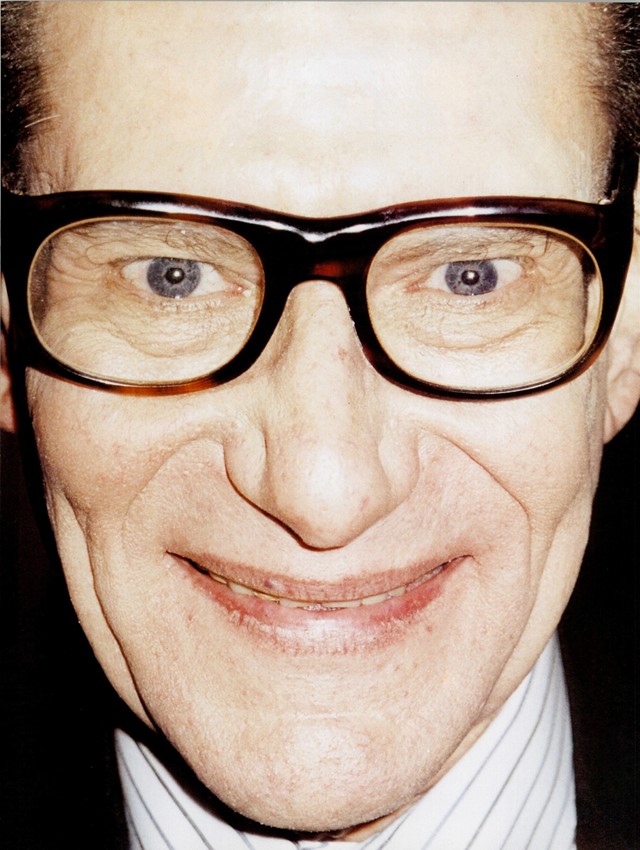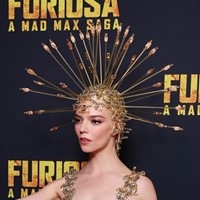As the YSL biopic hits UK cinemas this week, we remember the shy yet great designer in this archive interview by Susannah Frankel
Taken from Dazed & Confused issue 63, March 2000:
Trouser suits. Black leather biker jackets. Skinny sweaters. No living designer has had such an impact on how women dress as Yves Saint Laurent. Indeed, such is his legacy that he now has his own museum. An enigma after all these years, Saint Laurent still managed to spare a few words for Dazed & Confused.
"Look me, but don't touch me," says Monsieur Hector Pascuat, in pidgin English and waving a white cotton-gloved finger with menace. He is not, as it thankfully turns out, referring to his own diminutive if illustrious person dressed today in an immaculate, silver-grey three-piece suit – but to the precious contents of one of hundreds of refrigerated safes unlocked to reveal rails of the most exquisitely crafted and massively influential clothing designs in fashion history. "The sleeping bee-oo-tee-fuls!" Pascual announces, lovingly lifting one piece after another to show off the workmanship, protected, for all eternity, from destruction by the elements. First comes the "iris" cardigan, inspired by Van Gogh's painting, and made entirely by hand by the masterful house of Lesage, using "250,000 sequins, in 22 different colours, 200,000 individually threaded pearls and 250 metres of ribbon". Next is a "smoking" suit, the man's tuxedo, re-interpreted, for the first time back in 1966, to suit a woman's needs, thereby forever relieving her of the whimsical ocean of frills and chintz that was the only possible solution to evening wear that came before it.
In drawers beneath the rails, more garments lie, between rustling sheets of tissue paper: a safari jacket rests on a trapeze-line dress, the bright colours and rich brocades, on the African creations, inspired by the Ballets Russes, constructed out of row upon row of shiny beads. "Look me, but don't touch me," Pascual says again, daring any Philistine to approach with bare or even - quelle horreur! - unclean hands.
The setting is the Yves Saint Laurent Museum, which opened its doors to Paris and the world for the first time at the beginning of this year, to coincide with the launch of the spring/summer 2000 haute couture season. Hidden away in the suburbs of Paris, half an hour from the city centre, the airy space - walls of windows, polished wooden floors and huge floor-to-ceiling, shimmering gold leaf doors - houses no less than 5,000 outfits, 2,000 pairs of shoes, more than 10,000 pieces of jewellery and hundreds of hats.
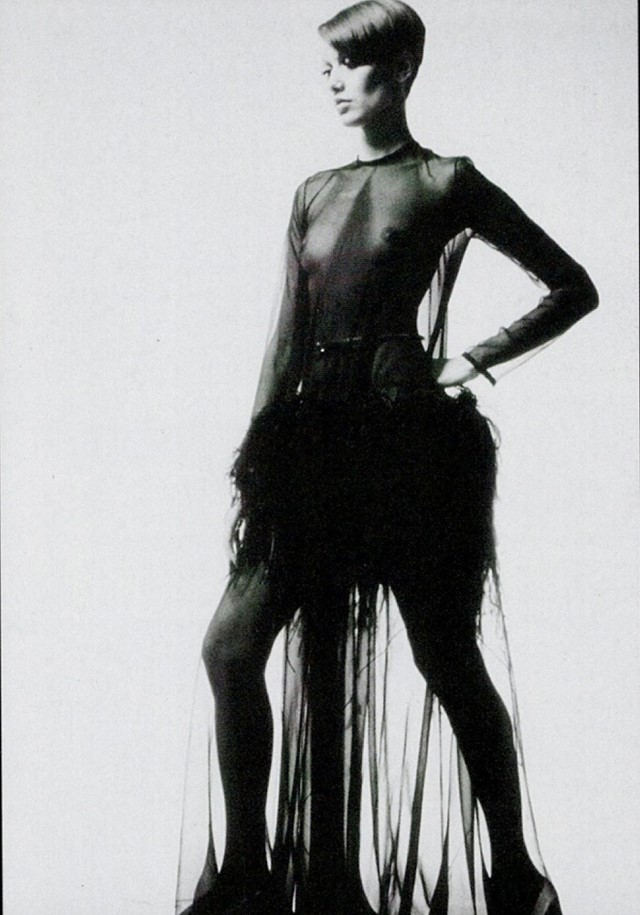
The archive has taken some 20 years to collate, with curator Pascual working closely with Saint Laurent himself on the project. As well as the most important designs from the ready-to-wear and haute couture collections, stretching right back to the young Saint Laurent's time at the head of the house of Christian Dior, his sketches and costumes for film are on display. In 1966 Saint Laurent famously dressed Catherine Deneuve for Luis Bunuel's Belle De Jour; 20 years later, Isabelle Adjani's clothes for Luc Besson's Subway also came courtesy of the designer. Yves Saint Laurent and Jean Cocteau were friends and collaborators for many years.
The museum is the only one of its kind in the world - the first given over entirely to the work of a fashion designer. But then, Yves Saint Laurent is rather more than just a designer. More than anyone else, he is responsible for informing the way women in the 20th century dress. (In this respect, only the mighty Coco Chanel comes close.) The trouser suit, the black leather biker jacket, the skinny black sweater, the sheer chiffon shirt, ethnic influences from Africa to India, fashion inspired by fine art and, of course, the aforementioned tuxedo... all came courtesy of Saint Laurent.
“My name will be written in fiery letters on the Champs Elysees” – Saint Laurent's ninth birthday wish
Over the past 100 years, there may have been, and indeed there are still, designers of creative genius - Balenciaga, Christian Dior, Issey Miyake and Rei Kawakubo all among them - but there isn't a day in the life of any modern woman reaching into her wardrobe that isn't affected by Yves Saint Laurent, and hardly a familiar item of clothing that he hasn't pioneered. This spring/summer alone, every label from Prada and MaxMara to Louis Vuitton and Chloe owes its inspiration to Yves Saint Laurent and in particular the re-emergence of what can best be described as his most ladylike clothing. The New York Times magazine more than paid lip-service to this most auspicious of revivals at the beginning of the season, shooting the work of various major international contemporary designers in a tribute to the master, and labelling the finished feature "It's All About Yves".
It is bewildering that Yves Saint Laurent, in person, seems very fragile, even demure. And this despite the fact that, now aged a grand old 63 and standing more than six feet tall, he is a quietly imposing figure, disconcertingly so. His legend casts a huge shadow over French culture. His portrait graces the last ever 5, 10 and 50 French franc pieces minted before the introduction of the Euro. On Valentine's day this year, French lovers received mail stamped with designs based on the designer's pop art heart images from the 1970s. The entire refurbishment of the recently re-opened Pompidou Centre was sponsored by, and is dedicated to, Pierre Berge and Yves Saint Laurent.
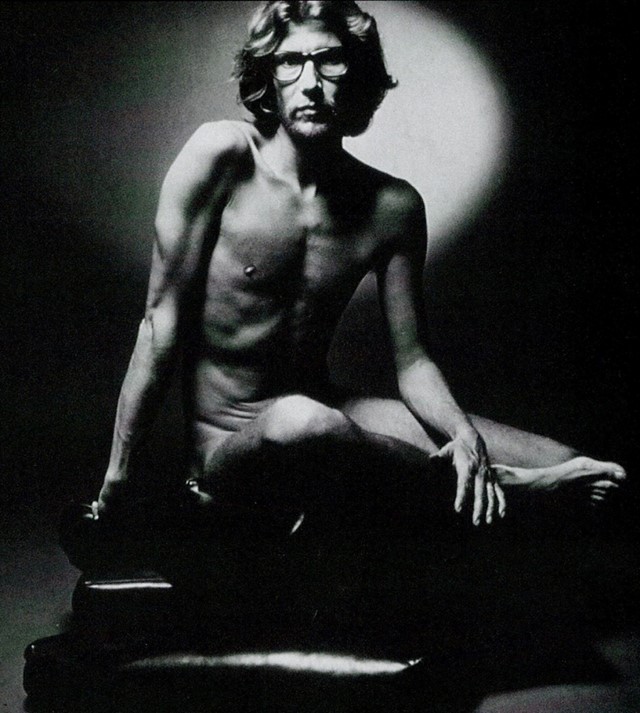
Yet he remains painfully shy. Any attempt to make eye to eye contact is rebuffed. Saint Laurent may have been happy to talk in his youth, but these days he is famously reclusive, rarely subjecting himself to the glare of the spotlight and wincing at the pop of photographers' flashbulbs. The hapless interviewer invariably meets with excruciatingly drawn out silences and a hesitance to offer any insights which is perhaps only rivalled by Samuel Beckett's. And like Beckett before him, Saint Laurent is by now one of life's last remaining enigmas. This is not, it seems, through any ill will or arrogance on his part. I was once summoned to his private red velvet lined office upstairs at his salon in Avenue Marceau and ceremoniously thanked by the great man himself for a photo shoot I'd commissioned of his work. As Saint Laurent shuffled forward to meet me, with his tiny lap dog, Moujik (the subject of Andy Warhol's last portrait) held firmly under his arm, it was difficult to know which of us was more overwhelmed by the encounter, and this despite the fact that this was fairly obviously a momentous occasion in a young woman's fashion life.
Yves Henri Donat Mathieu Saint Laurent was born in 1936 in Oran, Algeria to comfortably well-off parents. His father, Charles, owned a chain of cinemas. His mother, Lucienne, was a beauty who loved to entertain and doted on her son. "I can still see my mother," Yves Saint Laurent once wrote, "about to leave for a ball, come to kiss me goodnight, wearing a long dress of white tulle with pear-shaped white sequins." Despite an idyllic home life, even at an early age, Saint Laurent was overly sensitive, even neurotic. An instability that was fuelled by cruel teasing by his classmates at school. He himself maintains that this was because of his homosexuality, although there may well have been rather more that set him apart than that.
“My classmates could see I was not similar. So they made me their scapegoat. They hit me or locked me in the toilets. During the break I would take refuge in the chapel.”
"My classmates could see I was not similar. So they made me their scapegoat. They hit me or locked me in the toilets. During the break I would take refuge in the chapel or I would arrange to stay alone in the classroom." If the mental breakdowns and lapses into drug and alcohol abuse that have plagued him throughout his adult life can be attributed to this bullying at an early age, the same also furnished him with a less passive side to his nature an unswerving ambition to succeed, thereby proving his persecutors wrong. "I told myself repeatedly 'one day you will be famous'." On his ninth birthday, he remembers: " I had just blown out the candles of the cake when, with a second gulp of breath, I hurled my secret wish across a table surrounded by loving relatives: 'My name will be written in fiery letters on the Champs Elysees'."
Fame was not long coming to Yves Saint Laurent. At 17, he won a prize in a competition for the Wool Secretariat for a little black cocktail dress and, not long afterwards, the then editor of French Vogue introduced him to Christian Dior for whom he went to work at the height of his fame and the omnipotence of the New Look. Dior, by all accounts, had complete confidence in his young assistant – it was Saint Laurent, not Dior, who designed the evening dress worn in Avedon's Dovima And The Elephants, the seminal fashion image of 1955. Less than two years later, Dior died suddenly of a heart attack, leaving Saint Laurent, aged 21, presiding over France's most high-profile fashion house. He was and remains the youngest ever couturier, quickly justifying his position with a first collection of trapeze-line dresses which earnt him the headline in the next day's press: "Saint Laurent has saved France".
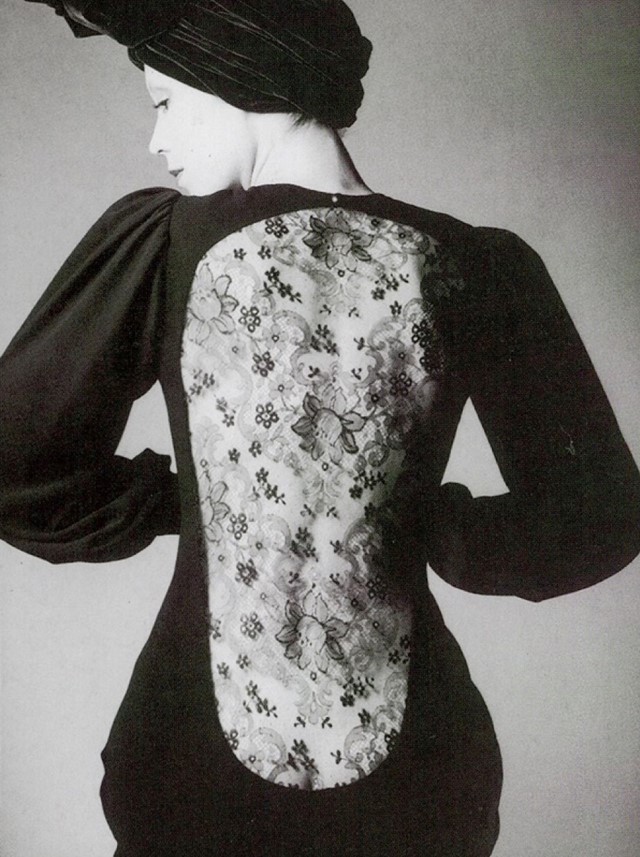
In 1960, Saint Laurent was drafted into the army and promptly had a nervous breakdown. Pierre Berge, whom the designer had met just prior to being called up, visited him in hospital every day to nurse him through this crisis. And so began the most romantic, if stormy, personal and creative business relationship in fashion history. By 1961, Saint Laurent was living with Berge, who sued Dior for breach of contract when the house failed to re-instate the designer after his illness, and with the proceeds set up Saint Laurent in his own business. The partners rented a two-room atelier with a skeleton staff mostly from Dior, and the rest, as they say, is history.
With Berge at his side providing business backup and supporting his friend both emotionally and professionally throughout almost his entire career, Saint Laurent went on to become the world's most famous fashion designer – the epitome of Parisian style and a man whose influence has stretched far beyond his own country. It is a belief commonly expressed by designers that what they need to achieve immortality is a Pierre Berge. Monsieur Berge, very touchingly, is quick to hand any such plaudits straight back to Saint Laurent. "Of course, those designers are quite wrong when they say they need me," he has said. "What they need is to be a Saint Laurent."
Saint Laurent's legacy was to invent all the great womenswear classics and, when he opened the first of a string of Rive Gauche boutiques in 1966, he put designer ready-to-wear on the map to boot. Before Saint Laurent, fashion was about haute couture – hand-stitched, exorbitantly priced outfits, designed by the great couturiers and the preserve of only the privileged few – or cheap copies cobbled together in uninspired workshops. Saint Laurent, in response to a burgeoning youth culture and a blithe, democratic spirit, changed that forever too.
The past 15 years, however, have taken their toll on the master's vulnerable nature. There have been times when he has staggered onto the catwalk at the end of his haute couture collection, supported by bodyguards, and rumours have sprung up about his health, and his increasing reliance on drugs and alcohol. More recently, the word is he has managed to overcome any problems with addiction and, certainly, for the past few seasons, he has seemed at least partially restored to his older, less unstable self. Models who have worked with him say that, despite claims that he is no longer in full control of the collection, backstage at the shows he is as alert as he ever was - changing last-minute details like the earrings worn with a single outfit, or the bag, with the same meticulous attention to detail as ever and demonstrating a passion for his craft that remains unmatched.
Dazed & Confused: Do you have any regrets?
Yves Saint Laurent: Not to have invented denim.
In recognition of his huge contribution to contemporary fashion, it is Saint Laurent's privilege to close the twice-yearly haute couture collections. This season, as always, he commandeered the exuberantly ornate ballroom of the Hotel Intercontinental for the purpose. This season there was also more of a frisson than ever surrounding the proceedings. Only the day before the show, news broke that Tom Ford – the man behind the spectacular regeneration of the Gucci label – had been installed as creative director of Yves Saint Laurent Rive Gauche men's and women's ready-to-wear, as well as the lucrative fragrance and accessory lines that prop up the label. Since last November, when Gucci acquired Sanofi – the company that had previously owned the house that bears Saint Laurent's name – Ford's forthcoming appointment had been the talk of all Paris, and by then it had been confirmed. So this, it was assumed, was the end of an era. But what the sceptics (and perhaps Gucci itself) had not bargained for was the ferocity of Saint Laurent's passion for couture.
"When the time comes, I will decide without hesitation to close down the couture house," Pierre Berge, for 40 years Saint Laurent's long-time business partner, former lover and closest friend, once said, at a time when Saint Laurent was physically and mentally at his lowest ebb. "I must do that for Yves. It is nonsense to carry on without him. Look at Chanel without Mademoiselle Chanel, and Dior without Christian Dior. It is more than nonsense. It has no integrity. It is a sham." And so, as guests at Yves Saint Laurent's spring/summer 2000 haute couture collection filed in to take their tiny gilt seats and see what the master had to offer this time round, for a little while at least, all eyes were, this time, on Tom Ford, sitting front row centre alongside Domenico de Sole, Gucci's inspired chief executive. From the instant the first outfit came out onto the catwalk, however, attention shifted to Saint Laurent once more. It was a triumph to match the glory days of the '60s and '70s.
"Yves Saint Laurent has inspired my best fashion photos," Helmut Newton wrote in a book celebrating the designer's 40th anniversary in fashion. "The 'smoking' rue Aubriot in Paris, the man on his knees rolling down the stocking of a woman in a tailored suit at the Trocadero, a colour photo for French Vogue of all the mannequins in the couture salon; a series of couples in tailored suits kissing each other... I like the ambiguous side of his fashion for the 'grande bourgeoisie'. There are so few people with whom I feel completely in accord. And he, he is so touching, so fragile."
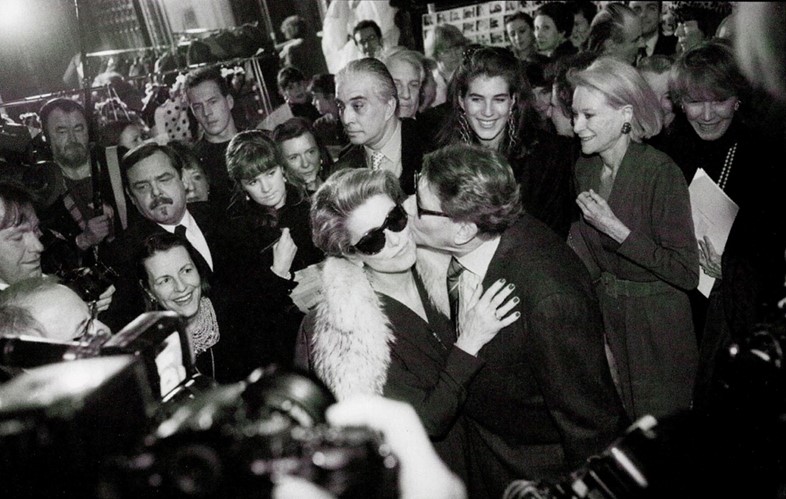
Given his immense stature, coupled with a morbid sensitivity, it is small wonder that Saint Laurent is constantly surrounded by an army of PRs and circle of close friends who have been devoted to him since his heyday – not to redirect any difficult questions but simply to protect his very delicate disposition from the stresses and strains of everyday life. These are led by Berge, himself, who was recently spotted gesturing like a scratching cat at an Italian journalist who dared to presume to ask his venerable charge questions. Not wishing to add to the assault on this fashion deity's senses then – or to be physically accosted by his protective other half, for that matter – a list of questions is faxed instead, thereby also protecting the great sense of mystique. The last thing we want now is to find out Saint Laurent is a mere mortal, after all. "No more than five, or perhaps ten questions, if you please. Monsieur Saint Laurent, 'e is very delicate, you see," we are instructed. Miraculously, 48 hours later, he responds.
Dazed & Confused: Of all the things you have ever designed, which is the one thing you most cherish?
Yves Saint Laurent: The smoking jacket because it gave freedom to the woman. It also gave the woman the confidence to feel beautiful.
D&C: What is the most exciting thing in fashion today?
YSL: No more rules, the freedom of dressing. The beauty of mixing vintage clothes with a pair of jeans that I love.
D&C: Is haute couture the most precious side of your work?
YSL: Yes, it is. I am very happy to design haute couture. It's a love story between couture and me.
D&C: What has been the most exciting time of your life?
YSL: My first show in 1962, rue Spontini and when I was honoured to be asked by Diana Vreeland to set up an exhibition of my work at the Metropolitan in New York in 1983.
D&C: What makes you most happy?
YSL: To come every day to 5, Avenue Marceau, all the people there are like my children. Seeing Cubism paintings at the Beaubourg makes me very happy and also old films.
D&C: Do you have any regrets?
YSL: Not to have invented denim.
D&C: What is it that most inspires you?
YSL: The fashion of the street.
